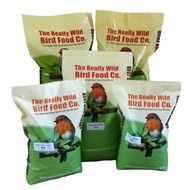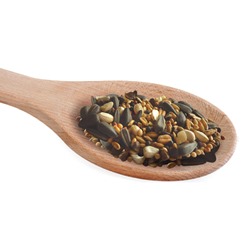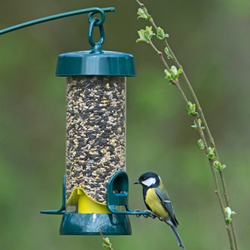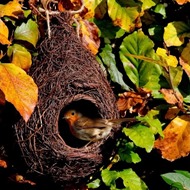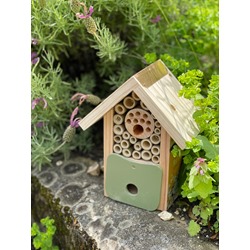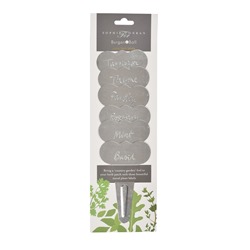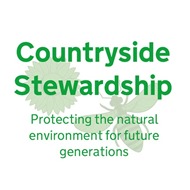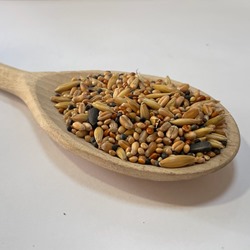There are so many beautiful aspects to our farm and amazing things to be seen and I really want to be able to share the beauty with you all. So what better way to do it than by taking some lovely photographs! Problem was I didn't have a good camera, so last month I took the plunge and bought the business a 'proper' camera.
Now I don't have any skills as a photographer (and I also don't have very good eyesight) so the two factors combined were bound to produce some fairly blurred images - but HOORAH for auto-focus. I have decided to ignore the 345 different set up options and just use the autofocus button. I tried to capture some of our farm birds but rapidly realised I will l need a considerably bigger lens. So while I am saving up for that, I will share 'big views' and 'close- ups' with you!
As you know, we do a lot of planting on the farm to help the survival of butterflies and bees, and on various areas of the farm Richard has planted strips of 'bumble bee mix' to provide a mass of plants which are rich in pollen (protein) and nectar (carbohydrate); this mix contains phacelia, borage, crimson clover, red clover, birds foot trefoil, vetch and sanfoin and is truly stunning.
Bumble bees are essential pollinators of fruit, vegetables and plants and their numbers in the UK are in decline - mainly due to the fact that there are far fewer flowers, in the countryside. Bumblebee nests are small which means they cannot store large quantities of honey - so that makes them more susceptible to the effects of a pollen shortage than, for example the honeybee which has cached large honey stores. However all is not lost, and with British gardens covering over 1million acres - we can all do our bit to help. The key is to plant native flowers that are rich in pollen and nectar - plants like foxgloves, geraniums, lavender, herbs and wild roses.
If you have an area of your garden which is particularly attractive to bumble bees, I would love to hear about it - and please send me your photos photocomp@reallywildbirdfood.co.uk and I will share them and any stories or advice you may have.
Did you know . ...?
Only bumble bees are capable of 'buzz pollination'. This occurs when the bumblebee grabs the flower and produces a high pitched 'buzz’. The vibration releases pollen that would otherwise stay trapped. Tomatoes rely on 'buzz pollination' for propagation.
Bumble bees 'scent mark' the flowers they have visited. The scent is released from a gland near their feet, which sticks to the flower and lets other bees know not to waste time on that flower – the cupboard is empty!
And finally - if you find a sleepy bumblebee you can help her survival by making up a warm sugar solution - soak a small piece of sponge in it and place the bee on the saturated sponge near some nectar laden flowers.
Off for a zzzzzzzzz myself '
Lesley
The Really Wild Bird Food Company Street End Farm Ashton Lane Bishop's Waltham Hampshire So32 1FS
 Back
Back Bird Foods
Bird Foods
 Seed Mixes
Seed Mixes Straight Seeds
Straight Seeds Mealworms & Worms
Mealworms & Worms Chicken Feed
Chicken Feed Duck Food
Duck Food Peanuts & Peanut Butter
Peanuts & Peanut Butter Suet & Fat Balls
Suet & Fat Balls No Mess Bird Seed
No Mess Bird Seed Wheat Free Bird Seed
Wheat Free Bird Seed Sunflower Seeds
Sunflower Seeds Softbill Bird Food
Softbill Bird Food Bulk Bird Seed
Bulk Bird Seed Trial Packs
Trial Packs Pick & Mix
Pick & Mix Mini Pick & Mix
Mini Pick & Mix Birdie Basics: Budget Bird Food
Birdie Basics: Budget Bird Food Food for Small Birds
Food for Small Birds Back
Back Bird Feeders
Bird Feeders
 Seed Feeders
Seed Feeders Peanut Feeders
Peanut Feeders Peanut Butter Feeders
Peanut Butter Feeders Suet & Fat Feeders
Suet & Fat Feeders Window Feeders
Window Feeders Hanging Feeders
Hanging Feeders Feeding Stations
Feeding Stations Ground Feeders
Ground Feeders Easy Clean Feeders
Easy Clean Feeders Bird Tables
Bird Tables Seed Trays
Seed Trays Bird Baths & Drinkers
Bird Baths & Drinkers Feeder Accessories
Feeder Accessories Feeder Hygiene
Feeder Hygiene Squirrel Proof Bird Feeders
Squirrel Proof Bird Feeders For the Kids
For the Kids Niger Seed Feeders
Niger Seed Feeders Mealworm Feeders
Mealworm Feeders Bird Food Storage
Bird Food Storage Fat Ball Feeders
Fat Ball Feeders Tube Feeders
Tube Feeders



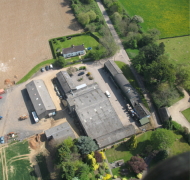 Our Farm
Our Farm
 Tips & Advice
Tips & Advice
Contact Us

